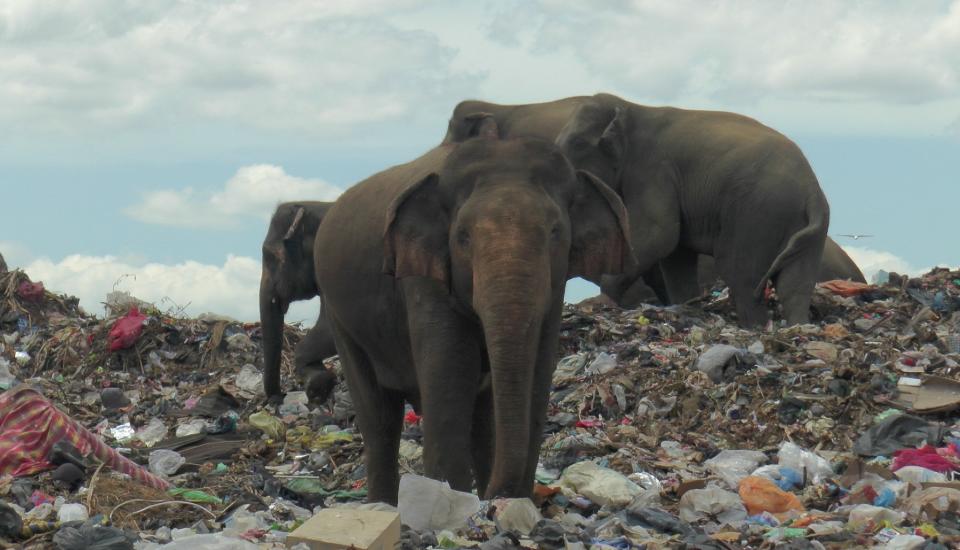Heartbreaking images show hungry elephants looking for food in landfill

A decade old Ampara landfill was created between an elephant corridor
(REUTERS)Images and videos of a herd of desperate wild elephants rummaging through mounds of rubbish in a landfill site have drawn attention to the plight of the animals in Sri Lanka’s Ampara, where the country is planning to build a moat to reduce human-animal conflict.
The Ampara landfill is one of three such rubbish dumps located next to wildlife protection zones in the country, and was created around a decade ago in the middle of an elephant corridor that is home to some 200 to 300 of the animals.
The elephants that pass through in search of food often end up consuming plastic and other hazardous waste, which slowly kills them, officials say. In 2019, a record 361 elephants died across Sri Lanka mainly because of humans, local environmental groups reported.
“There is no proper plan or a system for this,” said PH Kumara, part of the Gal Oya Farmers Committee, a farming collective in the region around Ampara. “Government institutions have established landfills on the border of wildlife protection zones. Once that is done, the wild elephants and other wild animals who eat the rubbish die.”
The government is now planning to build a moat around the landfill to deter the animals.
But in the meantime, villagers who have had an uneasy co-existence with the wild herds say the situation is only getting worse.
“The wild elephants that come to the landfill hang around here day and night,” said Mr Kumara.
“Then they go into neighbouring villages and harm the villagers, their property and agricultural land. The end result is that the human-elephant conflict gets worse and we lose elephants that are a national asset.”
There are around 7,500 wild elephants in Sri Lanka, which has a population of 22 million people.
Captive elephants are revered on the island and are used in religious and cultural events throughout the year.
Read More
World leaders at the G20 have a chance to save the planet’s wildlife
Investigation into mysterious elephant deaths in Zimbabwe forest
Wildlife crime underworld ‘rampant, with shockingly low convictions’

 Yahoo Finance
Yahoo Finance 